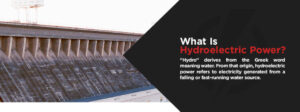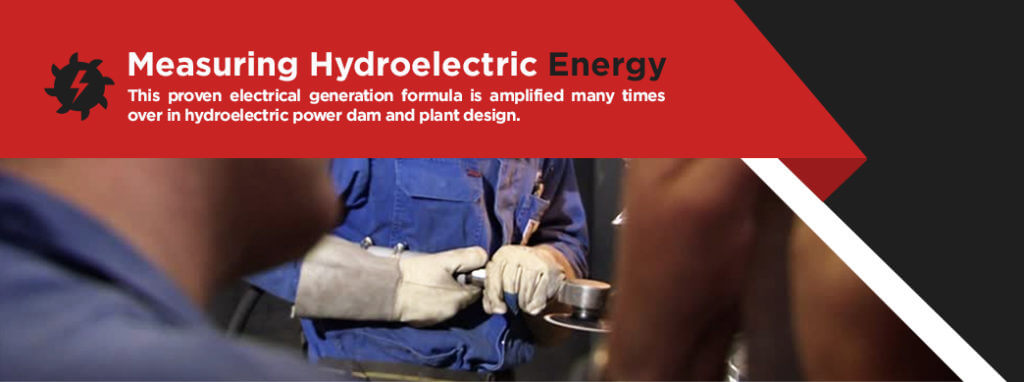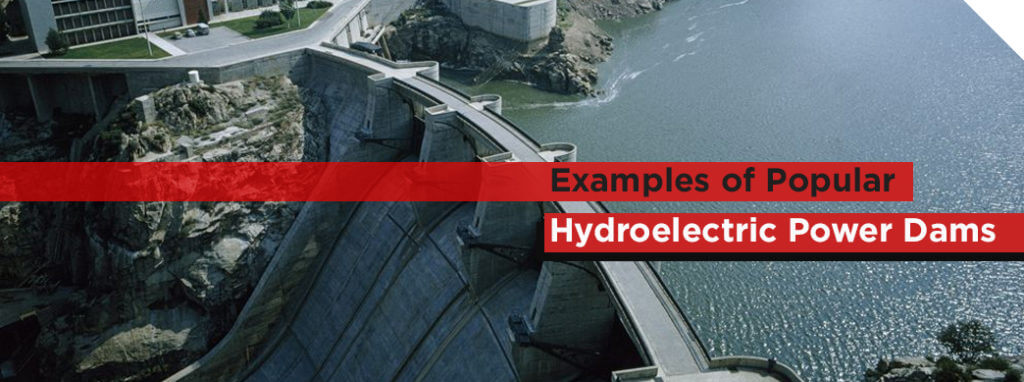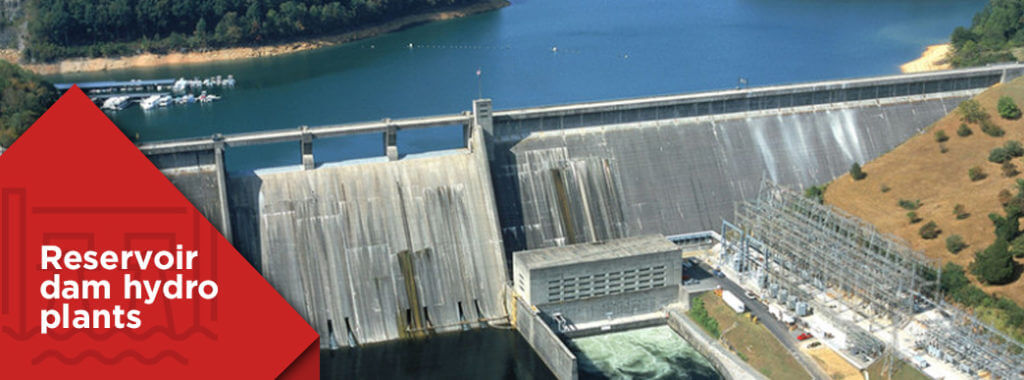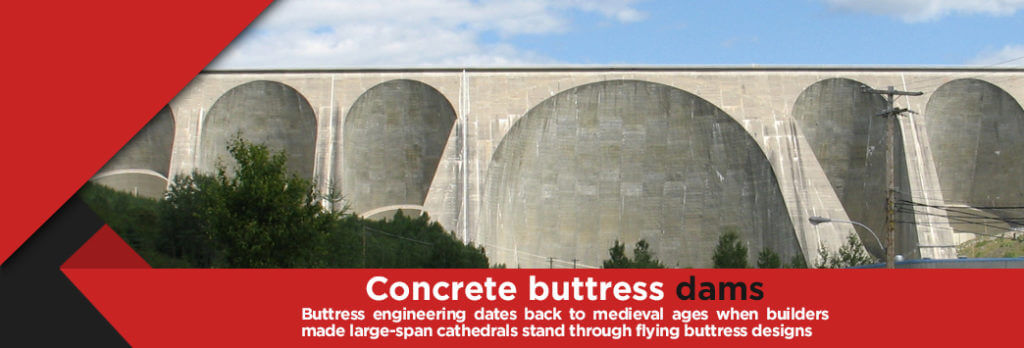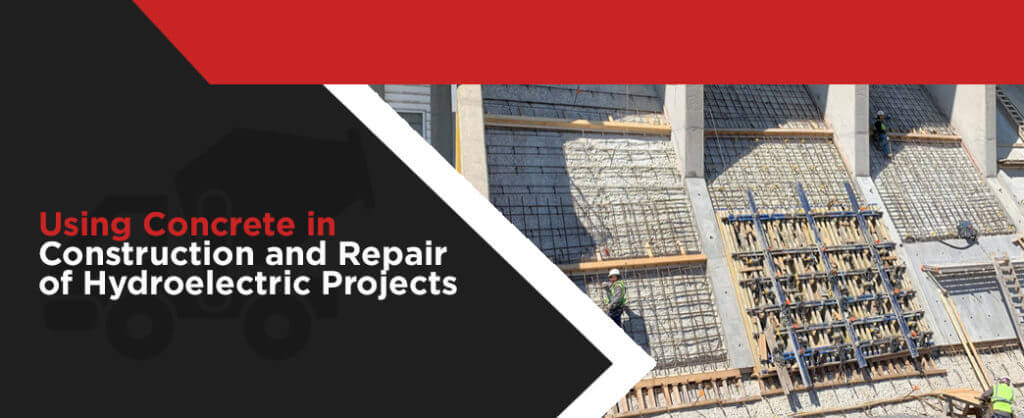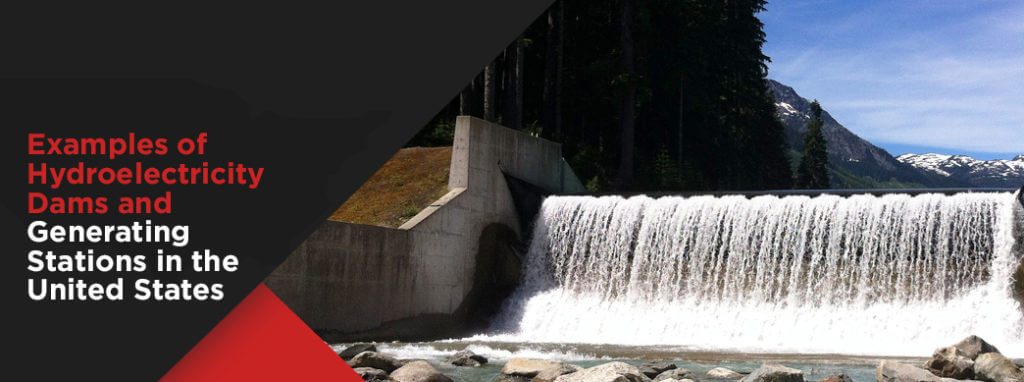HYDROPOWER CONCRETE
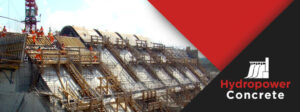
Harvesting environmentally stable energy is one of the biggest challenges facing the world today. It’s not that renewable energy sources like the sun, wind and water aren’t available to us. The problem with capturing natural energy and converting it into reliable electrical power is building economical infrastructures that leave an environmentally-friendly footprint with low carbon emissions and an undamaged ecology.
Fortunately for Americans, there’s one proven electrical energy production form that’s served the United States well for over a century. Hydroelectric power is based on water-driven generation systems, and it’s clean, affordable and dependable. Best of all, hydropower is a repeatable and renewable resource.
Hydroelectric power plants rely on nature’s hydrologic cycle to deliver constant streams of kinetic energy that’s mechanically converted into electrical current. Hydroelectric power stations deliver high-voltage feeds through a nation-wide grid that you can safely depend on every time you flick a light switch or plug in a device. However, hydropower plants wouldn’t exist without one main component required to build their facilities — concrete.
WHAT IS HYDROELECTRIC POWER?
“Hydro” derives from the Greek word meaning water. From that origin, hydroelectric power refers to electricity generated from a falling or fast-running water source. Humans have harnessed water power energy for thousands of years. The ancient Greeks and Romans captured water in reservoirs and used its mass to turn water wheels and drive irrigation systems. Before the Industrial Revolution, water wheels were common throughout Europe and Asia, where they powered mills and craft shops.
It was a natural progression that inventors would convert water power energy once the secret to electrical generation was unlocked in the mid-1800s. In 1882, the first commercial hydroelectric station opened in Appleton, Wis. Dammed-up water energy drove a Faraday turbine generator supplying electricity to the town’s paper mill.
During the first half of the 20th century, hydroelectric generator technology expanded to serve a nation-wide grid that supplied power to American cities and towns. With a strong demand and a continuous supply, electrical energy changed the face of America’s energy supply. A large portion of hydropower generation advances was due to evolving concrete technology that allowed engineers to design and build critical components like dams and spillways.
Hydropower concrete construction kept pace with ongoing generation and delivery system improvements. Hydroelectric dam construction hit a major milestone with the Hoover Dam being built of concrete during the 1930s. As a testament to concrete ingenuity, the Hoover Dam stands strong today and produces enough hydroelectricity to power 1.3 million American homes.
HOW DOES HYDROELECTRIC POWER WORK?
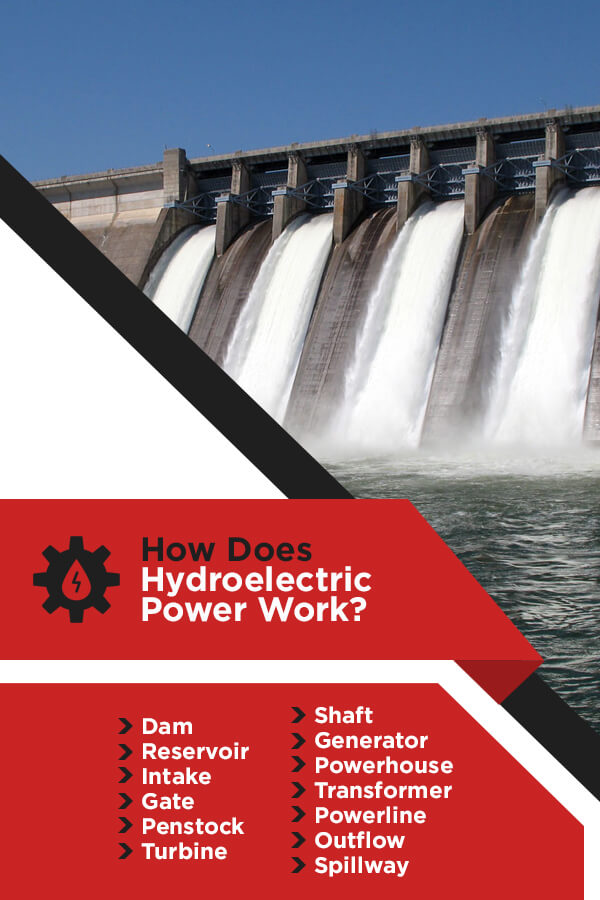
- Dam: A dam is the backbone of a hydroelectric generation station. A dam is a front-line wall that stops a natural watercourse flow and retains or directs it as an energy supply. In America, most hydro dams are concrete constructed except for a few earthen or rock-based structures.
- Reservoir: Hydroelectric station reservoirs are like batteries. They hold or reserve vast water volumes and contain it for controlled disbursement. Reservoir heights are crucial for electrical production, as the force produced by a turbine-generator system is directly related to the height of pressurized falling water.
- Intake: Water intakes in hydro dams sit at the lowest possible level. To maximize on water’s kinetic or pent-up energy, intakes collect reservoir contents that are under immense hydrostatic pressure due to the compounded gravitational weight from the reservoir level. This enormous water pressure transfers kinetic energy into mechanical energy via a system of gates, penstocks and turbines built inside the concrete dam complex.
- Gate: A concrete hydro dam’s gate is a control valve allowing regulated water flow from the reservoir and into the turbine housing. Most hydroelectric dam gates are metal and housed in concrete enclosures. Gates experience tremendous physical forces, and they serve to control water flow that dictates the amount of electrical production a plant puts out at a particular time.
- Penstock: Penstocks are intricately designed tunnels built into a concrete dam’s lower section or base. Penstocks capitalize on the gravity of down-flowing water collected at the reservoir intake and shoot it onward to the turbine housing. Penstocks are round and smooth concrete structures that work with fluid or hydrodynamic principles to minimize friction as well as prevent erosion on the exposed concrete face.
- Turbine: Hydroelectric turbines are giant propellers. Turbines have blades designed at certain pitches that move from hydrodynamic forces and convert the water’s kinetic or existing energy into mechanical energy. Power dam turbines sit inside tight tolerance concrete chambers that employ surge chambers to offload irregular water surges that could damage the turbine structure.
- Shaft: Driveshafts might not be the most interesting part of a hydro generating station, but they’re one of the most critical links. Shafts connect the spinning turbine and transfer mechanical energy vertically to the generator. Turbine-to-generator shafts sit inside concrete raceways that prevent deflection or any decrease in energy transmission.
- Generator: These critical hydroelectric power plant components turn the turbine and driveshaft’s mechanical energy into electrical energy. Generators complete the kinetic-mechanical-electrical energy cycle and produce alternating electrical current (AC) through transformers. As with other crucial hydroelectric elements, generators rely on specialized concrete structures to stabilize them.
- Powerhouse: Powerhouses contain above ground hydroelectric generation station processes. These include generator modules and related mechanisms that move generated current out into transformer sites and on through transmission lines. Powerhouses also include maintenance and administration works where sound suppression is necessary. Concrete-constructed powerhouses are ideal for serving these critical processes.
- Transformer: Once generators create electrical energy from kinetic and mechanical sources, the power must be transformed into a voltage that can transmit for miles without an appreciable loss or drop. Transformers do this job by “stepping-up” the power to a high amperage with low-resistance level. Once stepped-up power reaches a substation or secondary poles, transformers reduce or “step-down” the line voltage to a safe and workable end-user level.
- Powerline: Transmission or power lines deliver hydroelectric power from the dam site along a complicated and intertwined network. This transmission grid spans hundreds of miles from the generating powerhouse to final delivery as a metered energy product. Originally, transmission towers and poles were wood or steel structures. Today, engineered concrete products commonly support powerlines.
- Outflow: Once the water has passed from the reservoir and through the intake, gate, penstock and turbine dam components, it’s discharged back into nature through an outflow duct. Outflows are also complicated designs and have to accept the entire water volume sent to the turbine without causing a restriction or backflow. Modern hydroelectric facilities use concrete outflow races that are similar shapes to penstock tunnels.
- Spillway: Concrete spillways are part of every hydroelectric dam design. Spillways are side channels that divert excess water flow from the reservoir and around the generating system. Spillways relieve high water levels caused by seasonal changes like snowmelt and heavy rains, and they prevent water from cresting the dam and causing erosion to the dam face. Concrete spillways also play an essential ecological role where they act as fish ladders to help aquatic migrations.
No discussion about hydroelectric dams and plants is complete without mentioning the physics and mathematics involved in designing structures and components. Two factors play into how much kinetic, mechanical and electrical energy can be converted and harnessed in a hydropower plant. These are the size of the turbine and the generator capacity.
The rule-of-thumb for calculating generator and turbine size is they need to be proportional to the amount of water flow available at the site. To produce large power outputs, the equipment has to be equally big. The variable is the amount of water flow available.
This brings in the dam height equation. Hydronic force at the turbine level is related to what’s known as “head height.” This is the reservoir water level backed up by the hydro dam and the distance from the water surface to the turbine. Producing power is a mathematical function of the hydraulic head and flow rate volume or how much water falls at a given time and how much of it is falling. The standard power creation formula is one gallon of water by volume at a flow rate of one second per one hundred feet produces one kilowatt of electricity.
MEASURING HYDROELECTRIC ENERGY
This proven electrical generation formula is amplified many times over in hydroelectric power dam and plant design. As a simple example, a dam retaining a 100-foot water level is capable of turning one gallon of water per one second into a kilowatt, which is 1,000 watts. If you have 100 gallons of water at the same height and speed, you now produce 10,000 kilowatts of electrical energy.
A watt is an electrical measurement that shows work produced or how much electrical energy is used at a specific moment. You’re familiar, of course, with watts as they relate to light bulbs such as a 100-watt bulb being a little less than twice as bright as a 60-watt bulb. The same principle applies at hydroelectric plants, except they do it on a massive scale. Here is the breakdown of how watt figures apply:
- 1 watt equals one unit of electrical energy
- 1 Kilowatt equals 1,000 watts
- 1 Megawatt equals 1 million (1,000,000) watts
- 1 Gigawatt equals 1 billion (1,000,000,000) watts
- 1 Terawatt equals 1 trillion (1,000,000,000,000) watts
- 1 Petawatt equals 1,000,000,000,000,000 watts
Those are some impressive numbers when you consider the Hoover Dam produces 2,080 megawatts of electrical power at any given second and it’s not even on the list of the ten-largest hydroelectric dams in the world. These behemoths like China’s Three Gorges Dam produce 22.5 gigawatts of electricity per second. However, all the hydro dams in the world combined pale in comparison to the sun. Its solar rays shine an estimated 174 Petawatts of power on the planet constantly. Now that’s impressive production.
EXAMPLES OF POPULAR HYDROELECTRIC POWER DAMS
Hydroelectric power development comes from three main generation classes or types. Over the past century, engineers and scientists have experimented with many electrical generation techniques. Some power plant productions were successful, and some did more harm than good, such as nuclear power that heats water to drive steam-propelled generators.
Nuclear, fossil fuel and solar powered electrical generators have their pros and cons. Although all have been a boon to the concrete business where hydropower concrete companies contribute to infrastructure and safety systems, they don’t classify as true hydroelectric projects. The three actual power generation designs involving water energy are:
- Reservoir dam hydro plants: Dams are the most common form of trapping, reserving and converting water energy into electrical power. Dams rely on controlling water volumes and directing it to the turbine mechanisms then freeing the excess to continue along its natural path. Almost all of the world’s large capacity hydroelectric projects use a dam-reservoir approach.
- Run-of-river hydro plants: These free-flowing water generation facilities don’t build reservoirs to hold and retain water energy. Rather, run-of-river hydro plants site themselves in fast-flowing rivers where a constant and sufficient stream turns the turbines at a steady rate without the need to hold back water reserves. Run-of-river projects still employ a dam mechanism, but their purpose is to direct flowing water rather than restrict it.
- Pump storage hydropower (PSH): Pump storage hydropower is a novel approach capitalizing on the conventional dam and reservoir concept. PSH electrical generation systems still dam and hold the main water supply except they collect the outflow and pump in back up to the reservoir. PHS plants are best-suited in locations where water supply is intermittent and can be safely retained without compromising downstream ecology.
While conventional dam and reservoir systems are the mainstays in the hydroelectric production world, there’s no one-size-fits-all approach for their design. Each site employs a dam and reservoir design specific to their location and volume of electricity they’re expected to produce. Here are the four different concrete hydro dam and reservoir containment designs you’ll find around the world:
- Gravity dams: These are the earliest hydro dam designs. To some degree, gravity dams are the simplest. They are linear structures that bridge a watercourse and retain water volumes through their massive bulk, transferring water forces down to the earth through gravity. Some gravity-designed hydro dams are built of earth, rock or stone. Newer designs often use high-performance concrete.
- Concrete buttress dams: Buttress engineering dates back to medieval ages when builders made large-span cathedrals stand through flying buttress designs. In dam construction, buttresses are support mechanisms restraining a dam from the downstream side and pushing back against hydronic pressure. Buttresses only apply to dams built of concrete.
- Arch dams: These marvels of concrete engineering use a maverick approach compared to gravity and buttress-supported dams. Arch dams work on a long-understood principle of concrete engineering where concrete products are exceptionally strong under compression but relatively weak under tension. With concrete arch dam designs, the center of the dam structure curves or arches back against the upstream water flow. In turn, water forces compress the concrete dam face where the dam structure transfers kinetic energy back to the shore points and disperses it into nature.
- Arch-gravity dams: Many hydroelectric power dams use a modified version of conventional gravity and arch designs. These dams take the best of compressive strength found in arches and the brute power of the earth’s gravitational force. Arch-gravity dams have upstream-facing curves but also angle their downstream edge to transfer hydrostatic pressure to both the site sides and bottom. The Hoover Dam is a classic example of a robust concrete arch-gravity hydro dam that’s stood the test of time.
USING CONCRETE IN CONSTRUCTION AND REPAIR OF HYDROELECTRIC PROJECTS
Concrete is nature’s miracle construction material. Concrete is a composition of natural products including aggregates, cement powder and water. No building material is as environmentally sound, stable and economical for large-scale projects than concrete. For these reasons, concrete is the ideal material for building hydroelectric dams and their entire electrical generation components.
Engineers and dam designer have specified concrete as their main dam-building material for over one hundred years. Many original concrete dam structures still stand across America. This is an amazing testament to concrete’s enduring performance and longevity. Today’s forward-thinking dam builders rely on concrete products more than ever, and that’s because of some of the amazing breakthroughs in concrete technologies.
Two recent concrete technology concepts are High Performance Concrete (HPC) and Ultra-High Performance Concrete (UHPC). Both mix designs contain additives that increase concrete strength, lighten the product’s weight and allow a concrete placer more time to work with the pour before it solidifies. Better working time is a major advantage in building concrete power dams where continuous pours occur for months at a time.
Whether a dam builder uses conventional concrete or a variation of performance-enhanced mix designs, all concrete products offer similar hydropower concrete costs and benefits. Concrete is strong, durable, abrasion-resistant and withstands high impact forces. These features make concrete the dam-building material of choice, and it’s proven popular in hydro dams located across America.
EXAMPLES OF HYDROELECTRICITY DAMS AND GENERATING STATIONS IN THE UNITED STATES
Concrete is the most popular hydroelectric dam building material found in the United States. While the U.S. doesn’t have hydropower projects as large as some concrete dam structures in other parts of the world, our domestic hydropower supply wouldn’t be the same without our concrete dams. Here are examples from the list of hydroelectric dams in the U.S.:
- Grand Coulee Dam: This concrete gravity hydroelectric dam on the Grand Coulee River in Washington State produces up to 6,809 megawatts.
- Hoover Dam: As a concrete arch-gravity design, the Hoover Dam on the Arizona-Nevada border puts out 2,080 megawatts of electrical power.
- Glen Canyon Dam: With 1,320 megawatts of power, the Glen Canyon Dam is a concrete arch-gravity structure on the Colorado River in Arizona.
- Shasta Dam: The Shasta Dam puts out 676 megawatts of power from its site bridging the Sacramento River in Northern California.
- Dworshak Dam: This concrete-gravity dam generates 460 electrical megawatts by harnessing the North Fork Clearwater River in Idaho.
LEARN MORE ABOUT OUR CONCRETE CONSTRUCITON SERVICES
At R.J. Potteiger Construction Services, Inc., we’re very familiar with large and complex concrete projects. Although we don’t build hydroelectric dams, we’re capable of producing concrete-based structures that withstand time and meet exacting standards. We’ve been exceeding customer expectations for over 20 years and service Central Pennsylvania and the surrounding area.
At R.J. Potteiger Construction Services, Inc. we are a concrete contractor who listens to our customers and values a team approach to all project sizes. Whether your interest is large commercial construction, industrial services or a limited-scope residential package, we can make your concrete works flow smoothly.
To learn more about our capabilities, visit our concrete services page or call us today at 717-528-2782.




